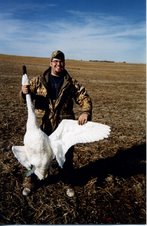
The first step I took as a fisherman was from catching sunnies off the dock to casting for bass along the docks. It is true that bass are a sunfish, so in theory this is a logical step. Most of my friends, like me, first started serious fishing for bass and then transitioned into walleyes.
Early in the year bass can be found in shallow hard bottom parts of many lakes. These are the spawning beds that the bass use. Bass can be caught in these areas by casting many different types of presentations. I have had the most luck using white or chartreuse spinner baits with fast retrieves. The hard bottoms of these locations are key for finding fish; a good spot to start is sandy bottoms or bulrushes.
Once the water warms up the bass will move into deeper cooler water. Under normal conditions in the mid-west this should occur in early June. Bass can be caught in 6-10 feet of water casting shallow diving crank baits and spinner baits. Small spoons and live bait presentations can work too.
Through July bass will move deeper but can be fished using the same methods. I have had very good luck catching largemouths with leeches while walleye fishing in the dog days. In fact some would argue that live bait presentations might be the best way to catch bass. Longtime guide Marv Koep of the Brainerd Lakes area swears by fishing with redtail chubs in 8-12 feet of water. The largemouth bass after all is in the Panfish family and I do not know of a better way to catch panfish then with a bobber.
Schools of Largemouth Bass and that contain larger fish are most commonly found in deeper water. The exception is that some fish find shade under docks and boats. Bass find these places to be ideal for eating bluegills as well. I have found casting spinner baits in these areas is the best approach. Spinner baits are the most versatile lure on the market; you can fish them deep, shallow, and they don’t usually hook up on weeds and docks. My buddies and I refer to this approach as “bass-mastering it.”
On lakes with softer bottoms lily pads also provide shade on sunny days for largemouth bass. Spots where the lily pads end, and drop offs begin are good locations. During the day try casting weedless spoons and top water lures into the lily pads. The key with top-water is to have a very slow retrieve. If you bring a top-water lure over the drop off make sure to really slow it down once the lure has moved past the weeds. You want to give the bass the impression that the lure ventured into some place it shouldn’t have.
If you don’t have success in the lily pads then go back along the same shoreline and fish the drop off. I like casting crankbaits that dive quickly like the Rapala fat-raps and rattle-traps. Cast the lure on the edge of the lily pads so it cranks down the drop off on the first part of your retrieve. Different colors work in different lakes during different light conditions. A good color to start with when using crankbaits for bass is crawdad.
In northern Minnesota Smallmouth Bass can be caught by casting the same lures along rocky drop offs. These spots can be identified by steep shorelines. This is where the smallies go to feed on crawfish. For lure color my first choice always depicts that.
During mid-day and later in the summer Smallmouth bass can be found around rocky humps. These humps can be found anywhere from 25-15 ft of water depending on the lake and weather. I cast or drift with 1/4 oz jigs tipped with minnows for these fish. By doing this I often catch walleyes too, or vice versa.
Fishing is all about mastering patterns. If you are not having any luck casting in shallows, try switching colors or presentations. If that does not work try different depths and different cover. When in doubt go back to fishing basics and try a bobber and a leech.

3 comments:
As the title implies, the article was elementary in nature. Yet it maintained a style that made it fun to read even though it was below my skill level as a fisherman. Good job!
Good words.
That is a big bucket mouth you're holding!
Post a Comment